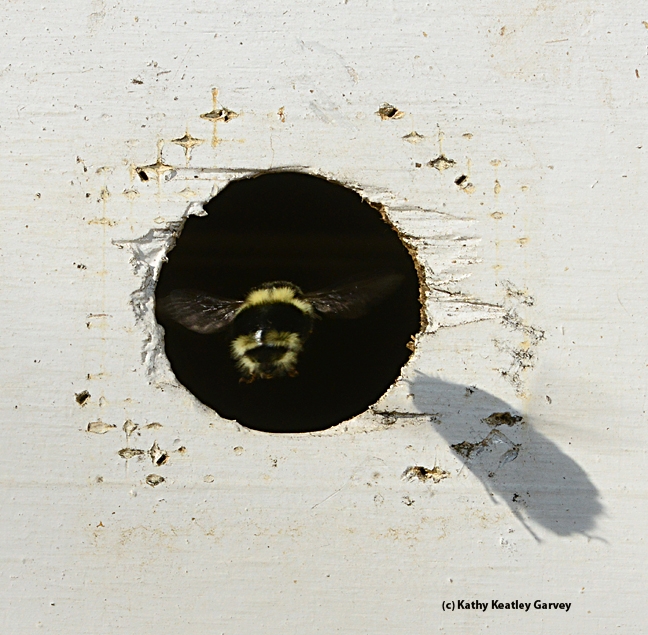
The three queen bumble bees (Bombus melanopygus) we found circling our porch lights the night on Jan. 9 appear to be fine.
Native pollinator specialist Robbin Thorp, emeritus professor of entomology at the University of California, Davis, cared for them at the Harry H. Laidlaw Jr. Honey Bee Research Facility from Jan. 9 through Jan. 22. Were they parasitized? Curious minds wanted to know.
We speculated that a parasitoid florid fly, Apocephalus borealis, which lays its eggs in bumble bees, wasps and honey bees, may have accounted for the strange behavior of the queens' "red-eye" flight. Were they "zombie" bees?
Result: No signs of parasitism. No sign of being "zombie" bumble bees. Nothing.
So this morning we released them back into their habitat. Two of the queens buzzed off immediately, while the third lingered. She foraged on the nearby pansies, considered a nuc box for her home, sipped some honey, buzzed back into the nuc box, foraged on some more pansies, sipped some more honey, and then buzzed back into the nuc box.
Her new home? Maybe.
However, we still don't know why the three bumble bee queens were buzzing around at night. We may never know.
Thorp said it best: "It was probably the Girls' Night Out."
Attached Images:


